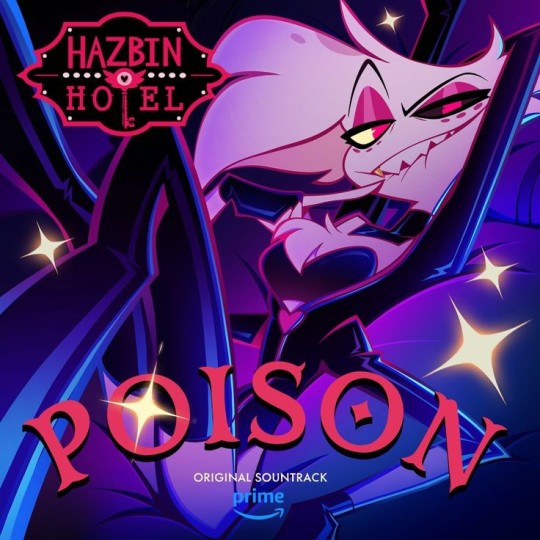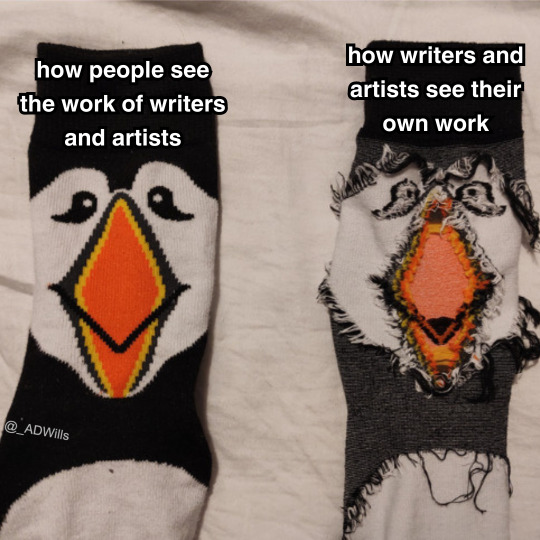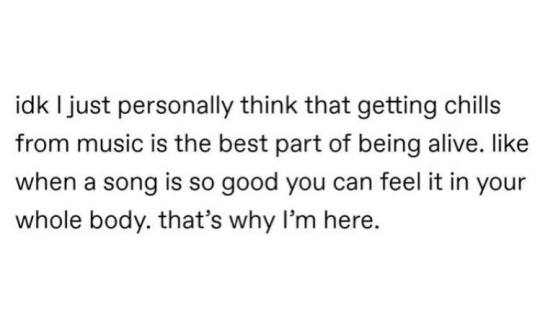Text

ABOUT TO WATCH THUNDERCAT LIVE IN MY CITY AHDHABHDDJBOFOGEMEWW!!!!!!!!
#thundercat#bass guitarist#bass player#bass guitar#bass#funk#funk music#funky#funky music#music#live music#live performance
0 notes
Text

#the <3 rambles#this is my first time ever making a meme pls give me validation#music#friends#f.r.i.e.n.d.s#friends meme#funny memes#songwriting#songwriter#funny#funny content#funny post#funny shit#funny stuff#funnymemes#memes#writers on tumblr#poems on tumblr#writers and poets#poets on tumblr#tumblr memes
4 notes
·
View notes
Text
Okay so I posted this on my other Tumblr a while back but I wanted to reblog it here because it’s still me geeking out over music. I love writing these essays, particularly about musical theatre, and I will absolutely take requests in my ask box of other songs you want me to analyse (though I reserve the right to veeto any songs I don’t know/don’t like/can’t think of anything good/new/interesting to analyse about it).
"Poison"- Hazbin Hotel: trochees, repetition, and genre.

I occasionally get the urge to write an in-depth analytical essay about whatever song or soundtrack I’m currently obsessed with. Y’know, for fun.
My BFF recently said that he thought “Poison” from Hazbin Hotel was overrated, so I am going to prove him wrong with science because that song goes so fucking hard.
The first thing I noticed was that the word “Poison” is a trochee (A word that has one stressed syllable followed by one unstressed syllable)- the opposite of an iamb. Because trochees end on a weak syllable, they often feel like they’re rolling, or more fittingly, falling into the next word or syllable. Because of this, they are often used to convey feelings of despair and death.
Interestingly, this is reflected in the melody. In the line “‘Cause I know you’re Poison, you’re feeding me Poison” the melody stays on the same note, C, except on the word “Poison”, which moves from an F# down to an E: the melody is falling down.
The word “Poison” is repeated over and over again, highlighted by the fact that it is the only word not on a C, creating a sense of constant, inescapable, repetition. There is no getting away from Valentino's "Poison".
The entirety of the song is comprised of only two chords, C minor, down to Ab major, (with the exception of the bridge, which is one singular F minor chord). This reflects the “falling” motif (although it varies on how you play it).
Also, the constant repetition of the same chords over and over and over and over reinforces that feeling that Angel is trapped in a cycle.
This all accumulates to reflect Angel Dust’s descent into utter desperation. It gives the impression that he’s constantly tripping and falling and repeating the cycle of addiction/abuse over and over again with no escape.
As the chorus repeats and repeats, the vocals get more and more desperate. He’s literally “trapped and it get’s worse with every hour”.
The repetitive melody and song structure is not the only reason why bubblegum pop works so well as a genre for this song.
Similar to “All You Wanna Do” from Six, this bright, flashy, upbeat style of music juxtaposes the unpleasant content of the lyrics, although it might not initially be obvious that the writers have made this stylistic choice, which is, in my opinion, why I think people are complaining that the song glorifies abuse (And those complaints are totally valid, I’m just sharing my interpretation of why I think the writers made these choices). I personally think that ubeat pop works best for this particular song, as the juxtaposition makes the audience feel uncomfortable and uneasy more than any haunting piano ballad would.
The genre also reflects how both Angel in Hazbin in and Kathrine in Six are in denial about their abusive relationships, until the very end of the song, when they both finally break.
The constant repetition of melodies, lyrics, and choruses reflecting the cycle of abuse is a technique also used in “All you wanna do”, and both songs can be compared musically, stylistically, structurally, lyrically, and in theme.
Anyway, I hath used my music theory brain to scientifically prove that this song slaps.
18 notes
·
View notes
Text
I gave up on reading that halfway through but I think the tl;dr of it all is "put beep boop noise in, beep boop noise sound good"
How Does an Audio Interface Work? Beginner's Guide to Audio Interfaces
New Post has been published on https://www.digitalaudiowiz.com/how-does-an-audio-interface-work/
How Does an Audio Interface Work? Beginner’s Guide to Audio Interfaces
At the very core, the job of an audio interface is to enhance the sound output of a computer.
They are a lot like sound cards but offer a considerably better performance than sound cards.
Most computer sound cards or outputs are not meant for high-resolution output. Therefore, they are insufficient when it comes to music production.
Moreover, an audio interface works in preparing sound that you put into your computer.
An interface makes sure that the user is able to record quality, high-resolution sound.
However, before getting a basic understanding of how an audio interface works, we must understand what an audio interface is.
What Is an Audio Interface?
An audio interface is a hardware that is used for connecting audio gear, such as microphones to computers.
The device works by converting analog signals into digital audio.
This makes your audio computer readable, and the computer is able to process it like any other information.
The audio interface sends digital audio to a computer through a medium.
This medium connection can be anything from a special PCI/PCIe card, USB to FireWire or Thunderbolt.
The device can perform the same job in reverse as well.
It receives digital information and converts it to analog signals.
These analog signals can then be heard through headphones, speakers or studio monitors.
It’s common for audio interfaces to have line-level analog inputs or outputs.
They can also include one or more preamplifiers for microphones and even digital inputs/outputs like AES.S/PDIF or Lightpipe.
When Do You Need an Audio Interface?
There are many advantages of using a dedicated audio interface instead of built-in sound-cards.
As discussed before, both sound cards and audio interfaces are not very different.
At its base, the sound card is also an audio interface.
However, sound cards have limited capabilities and aren’t ideal when someone wants to record audio.
Sounds cards are meant for general use. This means that they only have consumer-grade stereo line-level input /output.
Moreover, factors like electromagnetic and radio interference, excessive latency and jitters degrade sound quality.
Keep in mind; it’s impossible to record a full drum kit with just two channels for input.
Sound cards are ideal if you have less-demanding needs for audio.
So, playing back compressed audio or connecting a couple of Hi-Fi speakers is fine.
However, you’ll need an audio interface if you want to record or monitor production quality audio.
*** Check out Prices on Amazon ***
Choosing Suitable I/O Configuration for Audio Interfaces
There are a few considerations that are as important as choosing a suitable I/O configuration for your audio interface.
You have to consider what you will need to record now or in the future while deciding on the number and types of inputs/outputs.
There’s a lot of variety in the type of audio interfaces you can choose from.
You can choose everything from a 2-channel desktop unit to a system that records hundreds of channels.
For singers or songwriters, a pair of units is sufficient as long they choose the right ones.
The majority of interfaces have two or more microphone preamplifiers.
While using a condenser microphone, it essential to equip your interface’s preamp with phantom power.
However, if you plan to plug your guitar straight into the audio interface, make sure that your interface has instrument level or “hi-Z” inputs.
You shouldn’t forget that line-level inputs are ideal for headphone amps, outboard processors and studio monitors.
People tend to disregard the importance of digital I/O when they’re starting out.
But, they can prove to be useful later-on.
For example, few high-end one or two-channel microphone preamps are equipped with digital outputs.
This enables users to connect those preamps with their audio interfaces without removing line-level inputs.
Audio Interface Computer Connectivity Options
As the ancient saying goes, “The only thing constant in this life is change,” the technology in the recording industry goes through constant change as well.
However, there are a few audio interface connection types that are still considered as standard.
Some of these are FireWire, USB, Thunderbolt, and PCIe.
Most computers (both PCs and Macs) have to cater to USB ports with version 2 or 3.
FireWire (400 or 800) is still more common in Mac.
The average speed of both these packages is 480 Mbps. Under ideal conditions, you can record up to 64 tracks through this speed.
Yet there are simple interfaces that still support USB 1.1. This can be quite slow, but you can record one or two channels.
*** Check out Prices on Amazon ***
Technical Specifications in Audio Interfaces
How to read them?
Bit depth and sample rates are important specifications for any audio interface.
Bit depth has a significant impact on sound when you’re processing audio.
This means that CD-standard 16-bit audio has a total range of up to 96dB.
Problems arise when the digital noise floor is high, and the remaining range is small.
When working at 16-bits, the quieter section of your audio will have sudden noise.
Professionals recommend working with 24-bit at a dynamic range of 144dB.
On the other hand, the choice of sampling rates can vary according to what you intend to do with your audio.
If someone is planning to release demos on CD or wants to post MP3s, it’s ideal to work at or mix down to 16-bit/44.1 kHz.
For professionals who wish to release jazz in high-resolution, it would be disastrous to work at less than 24-bit/96 kHz.
Sampling rates as high as192 kHz are useful for sound design.
You can try the old trick of recording a dog snarl at 192 kHz and mixing it with a session of 96 kHz (without losing any resolution).
This will result in giving you the traditional monstrous growl you have heard in most sci-fi movies.
Additional Considerations for Audio Interface
Eager professionals should remember some other considerations as well.
There are still a few audio interfaces that are only compatible with either PC or Mac.
Before buying one for yourself, see if the audio interface will work in sync with your machine or not.
Many interfaces include handy features like embedded software control and DSP for mixing.
Software mixing allows professionals to do special tricks with their interfaces.
They can do everything from adding reverbs, setting up headphones mixes or delaying headphone mixes.
You can also do talkback communication with artists in the studio.
Moreover, you can do all this on an onboard DSP without increasing latency, affecting DW software or draining your CPU power.
*** Check out Prices on Amazon ***
Best Digital Audio Workstation (DAW) Software for PC and Mac – 2019 Edition
Need to know more about Digital Audio Workstations? Whether you’re looking for the Best DAW for beginners or already know about DAW software this review guide is the place for all the information regarding editing and producing your audio files.
2 notes
·
View notes
Text
I only really have experience with GarageBand and Cubase, but GarageBand is definitely the simpler of the two, particularly if you don't bother with plugins or a humongous sound library.
Does anybody know of a music DAW that's like. intermediate level?
I've started music making on This Shit
not to say it's bad at all, it's awesome, it's also kinda an mspaint of music making and I want to find a DAW between that and the ones with a million different features.
For example: I started drawing digital art on mspaint, then went to ibispaint x on my phone, then to clip studio, and it was the smoothest experience of my life.
I'm trying to find the Ibispaint of music production.
4 notes
·
View notes
Text
SONGWRITING BREAKTHROUGH!!!
I just found my old folder full of musical tinkerings back from when I first started properly getting into using DAWs* back in 2022.
I'm now going through them, trying my best to improve them, and having my proper "Taylor's Version, From the Vault" moment in my bedroom at 10:03pm on a Friday.
*DAWs = Digital Audio Workstation- the name we give software like Cubase and GarageBand that are used for recording and producing music.
#the <3 rambles#music#music blog#music producer#music production#digital audio workstation#musician#songwriter#singer#singer songwriter#my music#taylor swift#taylornation#taylor's version#swifties#taylor swift eras#red taylor’s version#reputayswift#reputation taylor’s version#all too well 10 minute version Taylor's Version From the Vault#1989 taylor's version#fearless taylor’s version#speak now taylor’s version#fearless#speak now#reputation#taylor swift 1989#taylor swift reputation#taylor swift red#taylor swift fearless
1 note
·
View note
Note
Hello, I just wanted to say I loved sunlight. It's a catchy hook with a nice metaphor about taking the good with the bad. It may be a demo, but I think you are off to a great start. The song has a very unique sound, and I wish you the best.
Thank you so much! That's really good to hear. I released it years ago and haven't been able to release anything since.
0 notes
Text
Whenever I'm feeling discouraged or I'm doubting myself, I find myself comparing my art to people I idolise- Taylor Swift, Lin-Manuel Miranda etc. And one thing that really helps with that is listening to their demo tracks- the ones they reccorded in their tiny little home studios with very basic equipment.
It makes me realise that the versions of them that we see are the polished, filtered versions- never that first draft.
I'm very much in the "demo" stages of my music. Everything that I put out right now will sound like I recorded it in my bedroom at 3am using a sock pulled over a coat-hanger as a pop shield, because that's what I did. I will get better with time, practice, and money for better equipment. Right now, though, there’s no harm in putting what I’m doing out there anyway.
There's no point in comparing myself to the Original Broadway Cast Recording of Hamilton, because that's way beyond what I'm even close to accomplishing, but listening to the Hamilton Demos, I can get a good idea of where I'm supposed to be at the moment, in my first, second, third drafts.
Every piece of art, whether it's crochet or writing or painting or music, will start with the first draft. Trust the process, and one day that shitty little demo will become your masterpiece :)
#music#music producer#musician#music is life#music blog#musicblr#hamilton musical#hamiltrash#lin manuel miranda#lin manuel appreciation post#lmm#lmms music#hamilton an american musical#music promotion#musical theater#musical theatre#musicals#new music#the <3 rambles
5 notes
·
View notes
Text
I really want to get into Opera- live performance is a dying business and I want to diversify my palette as much as possible- but I'm not sure where to find that sort of thing.
I wish more people talked about opera. like why aren't there more books and tv shows and movies about opera. opera is so fucking cool and it IS actually for everyone. thinking of opera as some elitist rich people ritual makes the problem worse and you miss out on so many opportunities to feel and experience art!!
the most frequent comment I hear is about the language barrier and not understanding what's going on, which I sooo get, but there is so much more to opera than the words and to think otherwise is to ignore how much other work goes into telling a story. in every direction there are people who have dedicated their lives to their craft. musicians and singers who have spent decades learning their instrument, designers and technicians who are creating the space, composers, conductors, stage managers, librarians. there is so much story that can be told through vocalization, instrumentation, setting, costume, lighting... and every performance is a showing of someone's life work. it's beautiful.
and yeah, the storylines are crazy and there's tropes out the wazoo but hey
it's opera
218 notes
·
View notes
Text

Still waiting on speakers, mic, and MIDI keyboard, but I finally have my own recording setup!! Get ready, Tumblr, to hear some kickass tunes!
#music#musician#cubase#recording session#recording#music producer#music promotion#composer#pc#composition#performing art#the <3 rambles
0 notes
Text
The orchestra that I'm part of just had their first big rehearsal session with other orchestras. I'm very new to playing in large ensembles, so this was an interesting learning experience. It was fun to chat with other bass guitarists, and bond over our hatred of amplifiers. If you're considering joining a group like this, take this post as a sign. 1000/10 would recommend.
#music#orchestra#string ensemble#bass#bass guitar#bass guitarist#bass player#musician#performing art#performance#the <3 rambles
0 notes
Text
This blog is for any and all artists and creative peoples of the internet.
Come with me on a journey as I learn how to use music production, software, and composition. I have reccorded one compositional album at the time of posting, and am in the process of writing the second, a process I intend to share with all of you. It can be tough learning a new skill when everyone around seems to be better than you. I want to share the mistakes, trials, and tribulations of learning my craft, which I hope y'all can relate to.
There's currently a delay with my recording setup, but I should hopefully be releasing my new album soon.
Where to find me:
Bandcamp:
https://theheartonmyt-shirt.bandcamp.com
Personal Tumblr:
@poppitron360
0 notes



